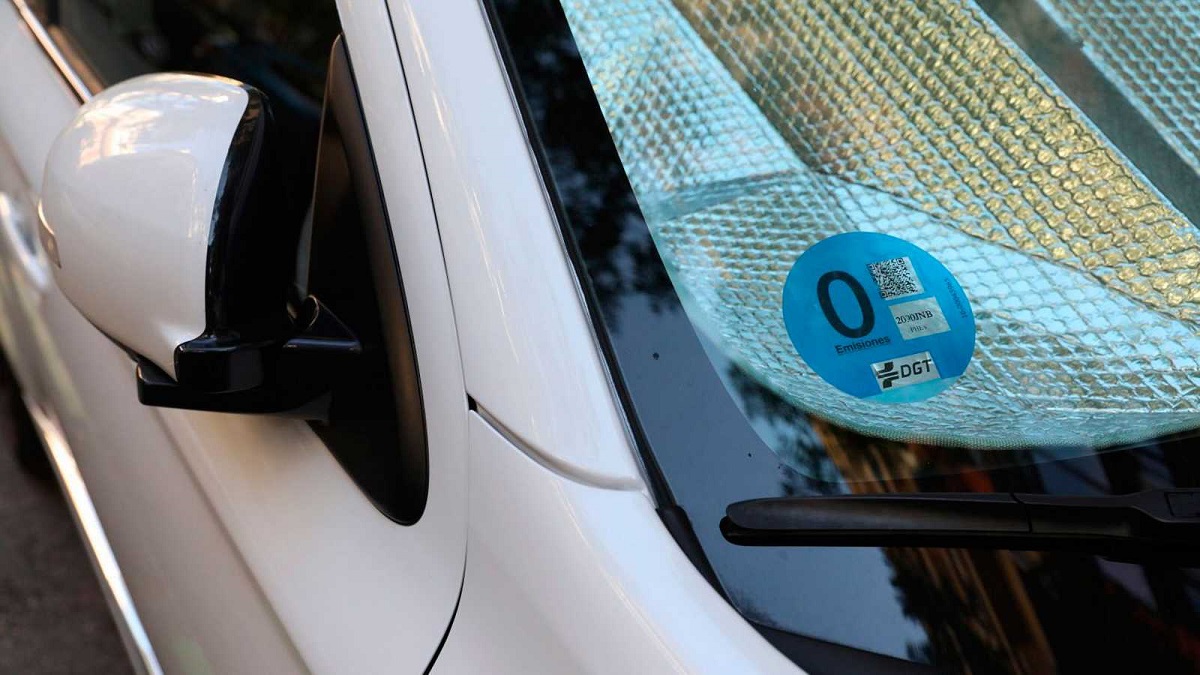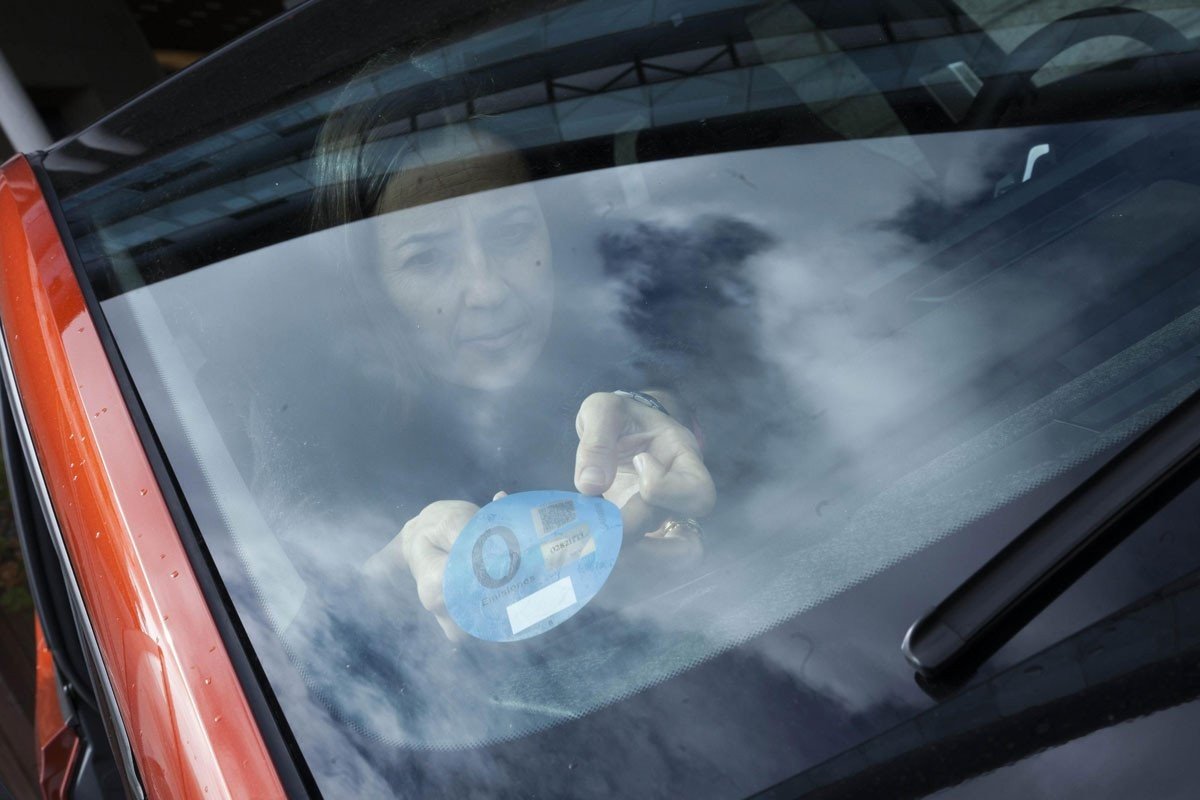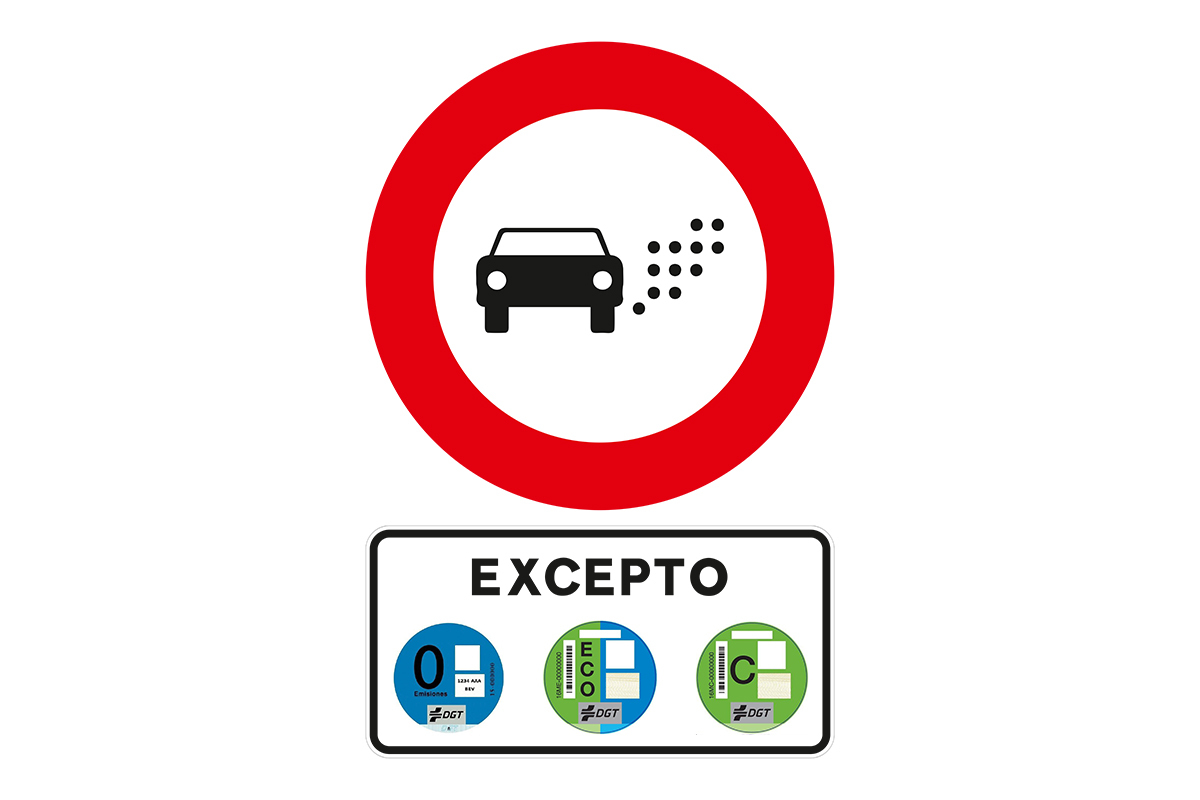
We know that environmental pollution from vehicles and transportation in general cause large amounts of toxins for the atmosphere that affect air quality and climate change. To alleviate these problems, the DGT released in 2016 some pollution stickers that tell us if the vehicles are more or less polluting. A question that comes up for many drivers is whether it is the contamination sticker is mandatory.
For this reason, we are going to dedicate this article to telling you if the pollution sticker is mandatory, what its characteristics are and how important it is to have it in the car.
pollution sticker

Environmental labels are a reality. Promoted by the General Directorate of Transport through the National Air Quality Plan 2013-2016, these colorful stickers make it easy to identify cars based on their polluting emissions. so that? It mainly supports municipal policies in metropolitan cities such as Barcelona or Madrid.
This system of vehicle classification by color labels will allow controlled access to the centers of large cities, like those of the past. Thanks to these badges, you can effectively restrict the parking of certain vehicles in residential or central areas, which enter the city center due to high pollution incidents…
These five elements are common to all labels, depending on the label, the information in each section will vary.
- EURO emission level or category identifier. In the case of a zero emission label, only the number 0 appears.
- QR Code. It shows us basic information about our vehicle: year of registration, make and model, fuel, category and electric autonomy, level of euro emissions and economic solidity.
- Label numbers and barcodes
- Vehicle registration number and fuel (varies depending on the label): Zero Emission and ECO show the license plate and the energy consumed by the vehicle (BEV, REEV, PHEV, FCEV, or HICEV in the case of Zero Emission, PHEV, HEV, LPG, CNG or LNG in the case of Zero Emission). In C and B collect license plate and type of fuel (diesel or gasoline)
- DGT and FNMT flag
Zero emission label

This badge is used to identify less polluting vehicles. The so-called zero label, or blue, corresponds to the "greenest" vehicle, or the same, that pollutes the least. We can find it in mopeds, tricycles, quads and motorcycles with batteries; passenger cars; light vans, vehicles with more than 8 seats and classified as battery electric vehicles (BEV) in the DGT vehicle registry, Extended Range Electric Vehicle (REEV), Plug-in Hybrid Electric Vehicle (PHEV) goods transport vehicle with a minimum autonomy of 40 km or fuel cell vehicle.
Registrations of electric and hybrid vehicles totaled 73.752 in the first ten months of 2018, 41 percent more than in the same period of 2017, according to the ANFAC association. Madrid leads the ranking of registrations, followed by Barcelona, Andalusia and the Valencian Communities.
Drivers of this type of vehicle enjoy complete freedom of movement in the city, without access restrictions in the event of pollution, and can park in the center for free [in some cases].
eco label

Vehicles given the ECO designation by the DGT sticker [half green, half blue] are passenger cars, light vans, vehicles with more than 8 seats and vehicles classified as plug-in hybrids in the registry of vehicles with low electric vehicle autonomy Freight vehicle Vehicles powered by non-plug-in hybrid electric vehicles (HEV), compressed natural gas (CNG) and liquefied petroleum gas (LPG) in 40 km mode.
Although ECOs are classified as one of the cleanest vehicles, during high pollution events, ECOs can be affected by parking and city entry restrictions, depending on the scenario in which they are found. However, as a general rule, drivers of these vehicles will not experience traffic problems or restrictions, as these events are rare and occur in exceptional circumstances.
Ecological Label DGT ECO – Zero
Label C
The green label with the letter C covers gasoline and light vehicles registered after January 2006 and diesel vehicles registered after 2014, vehicles with more than 8 seats and gasoline and diesel cargo shipments registered to from 2014. This singularity affects the Euro 4, 5 and 6 gasoline and Euro 6 diesel regulations.
Regarding the reduction of access, parking or restrictions, it will be more permissive than the first two categories, depending on the scenario in which it finds itself. Given the alert situation, motor vehicles, including mopeds, will be prohibited from circulating and parking in the city, with the exception of free taxis.
Label B
The yellow B label corresponds to the most polluting car in this DGT catalogue. Gasoline vehicles and light vehicles registered in January 2000, diesel vehicles registered in January 2006 and vehicles with more than 8 seats and gasoline and diesel goods transport vehicles registered in 2005. They must be compatible with Euro 3 and Euro 4 and 5 diesel.
Cars with a B (yellow) label are the ones that experience the most inconvenience when it comes to reducing circulation and parking when the protocol is activated in the event of a pollution incident, which always depends on the level of pollution.
Is the contamination sticker mandatory?
Today, the placement of the pollution sticker at the national level it is voluntary. However, this is still highly recommended, since if we do not do it, we can lose the advantages of vehicle circulation or parking. The DGT itself points out that «The placement of the badge is voluntary. However, as it makes it easier to quickly identify less polluting vehicles, we recommend sticking it to the lower right hand corner of the front windscreen." Lower right corner (if you have it), or if you don't have it, place it where the vehicle is visible.
I hope that with this information you can learn more about whether the contamination sticker is mandatory.